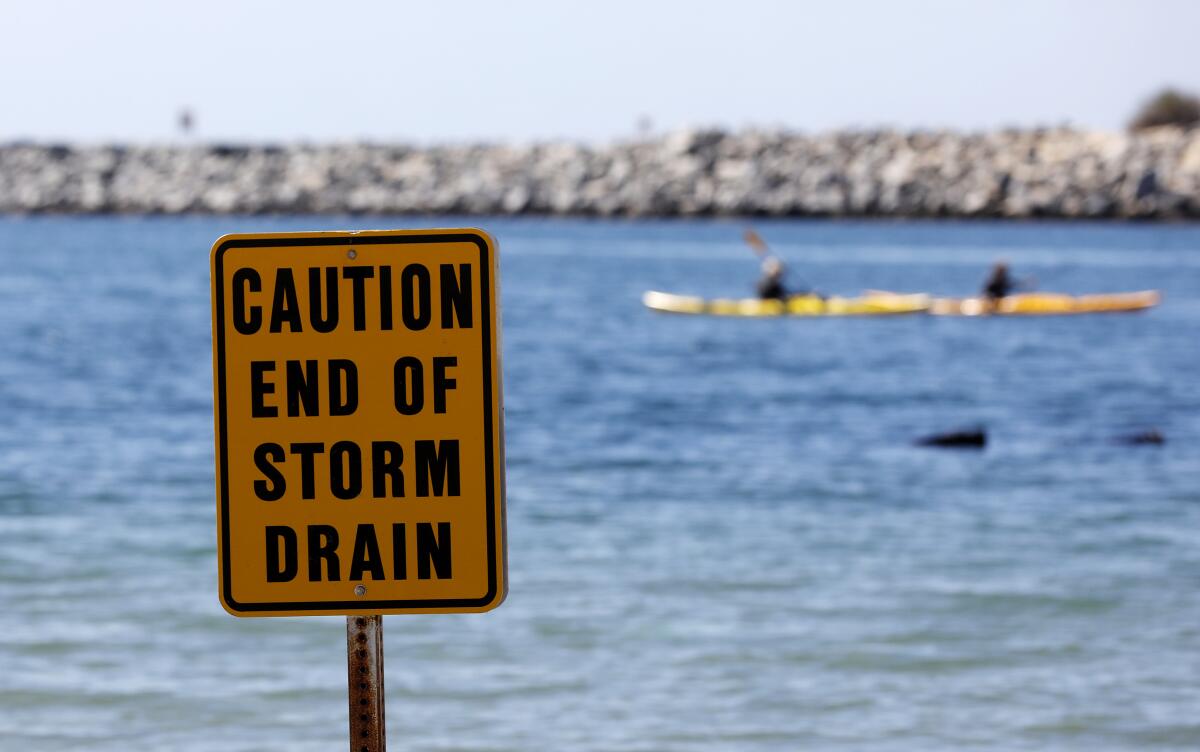Santa Ana Regional Water Quality Control Board extends study period in Newport Bay

An already 20-year-long timeline to complete the study of fecal coliform bacteria in Newport Bay has been given an eight-year extension by the Santa Ana Regional Water Quality Control Board, much to the dismay of Orange County Coastkeeper.
“We believe everyone has the right to swimmable, drinkable, fishable water, and the regional board’s TMDL [total maximum daily loads] extension impedes that goal for Newport Bay,” said O.C. Coastkeeper’s associate director of programs Ray Hiemstra on Friday. “Unfortunately, this decision is part of a long pattern from this board of granting extensions rather than holding others accountable.
“Now it’ll be over eight years until we see any action on the shellfish contamination issue impacting the bay’s water quality.”
TMDLs define the amount of a pollutant that can enter a body of water without resulting in violations of water quality standards according to the U.S. Clean Water Act. They are essentially plans to achieve water quality standards through permits and other regulatory actions, said senior engineering geologist Terri Reeder.
The regional water control board was asked to consider at its June 3 meeting whether or not to revise existing TMDLs that were adopted for Newport Harbor in 1999.
Reeder said the loads established for Newport Harbor focused on fecal coliform bacteria, which the board then maintained was the best indicator for protection of human health. Coliforms are generally harmless to human beings, but the presence of them at any concentration typically indicates other pathogens, according to the federal Environmental Protection Agency.
According to a staff report, the fecal coliform TMDLs included wasteload and load allocations in addition to an implementation plan that would assure the water quality objectives for the shellfish that can be collected and harvested in Newport Bay.
The extension approved this month is on top of an extension that had already been given in 2019, when the Santa Ana Water Board staff anticipated a need for three additional years to complete studies to determine if the current water quality objectives for bacteria in shellfish — based on commercial shellfish harvesting regulations — actually correlate with indicator bacteria and pathogens in shellfish.
Only half of those studies were done, thus necessitating the additional requested extension of eight years to Dec. 31, 2030.
Before giving their unanimous approval to the extension, board members raised concerns about whether or not the eight-year window, which staff said was a compromise with O.C. Coastkeeper, would be enough time for staff to conduct and complete the studies.
A letter was submitted to the board by O.C. Coastkeeper objecting to the extension on the grounds it failed to comply with state water code, lacked a schedule for compliance with the already adopted TMDL and does not include interim timelines. Board staff refuted these claims, saying that they did in fact comply with state water code, that they’d included a schedule, and interim timelines were not required by law.
At the meeting, Hiemstra described the extension as “part of a pattern in practice of noncompliance in this and other TMDLs in Orange County” and called for the rejection of the extension as the nonprofit believes two decades should have been enough to determine whether or not judging the cleanliness of the bay by way of fecal coliform bacteria was a proper criteria.
Orange County Environmental Resources deputy director Amanda Carr said that in two studies, the majority of people who collected shellfish in lower Newport Bay were reporting the morsels were used for bait. But, Carr noted the topic at hand was not a matter of attainment.
“What we are finding is that the standard does not correlate with the risk in the shellfish. We are meeting the ... standard primarily during dry weather for a majority of the time. We are meeting the water quality objective,” said Carr. “The water quality objective does not predict whether there are viruses in the shellfish. We’re looking for something that doesn’t predict the risk of eating the shellfish.
“That’s why we want to adjust the standard because we want to make sure as regulated entities that our efforts are targeted at things that cause risk to human health, and fecal coliform concentrations in the water don’t do that.”
Board member John Scandura said he lives in Huntington Beach and that his heart went out to O.C. Coastkeeper, but the studies could potentially lead to more stringent standards than already exist.
Board member William Ruh said he agreed with Scandura but added, “I’m a bit dismayed that we have schedules that were to be met and they weren’t met. I can’t do that. I can’t turn around and have a schedule and say I’m due at the office at 7:30 and then decide ‘Well, I want to come in at that time or that time.’
“There’s schedules and standards that have to be met and we need to do that. Twenty-two years is a long time. and I would urge that in the future the entities involved meet those schedules, follow those schedules and do them to the rule. There is no excuse.”
All the latest on Orange County from Orange County.
Get our free TimesOC newsletter.
You may occasionally receive promotional content from the Daily Pilot.




